The Tanzanian Educational System
In my last update I indicated that I would describe the Tanzanian educational system. The Ministry of Education manages the government educational system centrally. There also exists an extensive system of private schools. The private schools include English medium schools and many religion based schools. The private school system is out of reach for much of the population because of the high level of fees. In general, the quality of the private schools is significantly better than government schools.
The existing school system follows the British model and includes a series of national examinations. The public school system starts with kindergarten, followed by primary school (grades 1-7). Effective 2002, primary school became “free,” however the cost of uniforms, school supplies and various fees imposed relative to family cash income in rural areas can be substantial.
At the end of primary education students take a national examination and those who pass can attend secondary schooling. Secondary education is split into two components, Ordinary Level (O-level, consists of 4 years, referred to Forms 1 through 4) and Advanced Level (A-level, consists of 2 years, Forms 5 and 6). There are national examinations in Forms 2, 4 and 6. Students must pass the national examinations in order to continue their education in the government educational system. At the secondary level, students are required to pay tuition, various miscellaneous fees, purchase uniforms and pay for their school supplies.
The cost of education is a significant burden for rural families, particularly large families, single parent and families that have taken in orphan children. Wandering around you see a significant number of children who, based on appearance should be in primary school and are not. At the secondary level one sees instances of children taking turns to attend school or a limited number of children may be elected to continue education.
With the implementation of free primary education, there was a very large increase in school attendance, resulting in large class size – average class size is around 55 students. There is a significant shortage of textbooks and students generally share. I have been in rural primary schools where no textbooks were in sight.
I visited a rural school a few days ago and am including pictures of two of the classroom buildings and the inside of a classroom below:
I am currently in Tukuyu. I had originally planned on traveling by bus from Moshi to Tukuyu. However I learned that there is now air service from Moshi to Mbeya through Dar es Salaam with Precision Air. After doing a Google search on their safety record and the equipment they fly, I decided to fly to Mbeya. I was met at the Mbeya airport and taken to Tukuyu, where my visit has been pleasant.
The principal I met last year at the Tukuyu School of Nursing, Ellen Mwandemele, has retired, although she is still active at the school. She lives close by and students continue to visit her at her home. The new principal is Nolasca Mtega. Her picture is below:
Both Ellen and Nolasco have made me feel very welcome in Tukuyu and the school.
In the past week I have reviewed student files, spoken to school staff and selected 5 students for sponsorship. These students are currently in their first year of their studies and their sponsorship will begin with their second year. I will share some background information on each of the newly sponsored students in my next letter.
Of the students we currently sponsor in Tukuyu, five will complete their studies next month and take their national examination, leading to registered nurse and registered midwife designation.
Last evening I hosted the 15 sponsored students for dinner. The additional guests were Ellen, Nolasca and Stephanie. I met Stephanie in Tukuyu this past week. She is a Peace Corps veteran, having taught in Tanzania. She is currently working for Africa Bridge, a non-profit that works in various villages in the Tukuyu area with a focus on assisting “vulnerable children” and implementing programs that enhance income for the families that care for these children. The menu of chicken curry, french fries and soda was well received. A couple of group pictures follow:
Following dinner I presented two awards in recognition of the interesting emails they provided. The first award was presented to Tasiana and consisted of a card expressing our thanks, a small financial award and a diary so that she can record her experiences. The second award was given to Devota, who was unable to join us due to illness. In the following picture Tasiana receives her award:
We followed the award event with a grab bag. I laid various shawls, jewelry items and cosmetic items on a table and each student selected a piece of paper with a number. Starting with number 1, each student selected an item from the table. Nolasca selected for Devota, who was absent due to illness. I was surprised at how quickly the students were able to make their selection. A few pictures of the grab bag event follow:
At the end of the evening Rebeca, one of the graduating students, spoke on behalf of the students and expressed their thanks to all of those assisted in their sponsorship.
It was a very pleasant evening for all attendees. I also want to express my thanks to all of you who make it possible to sponsor these student nurses. I tend to think of the students we sponsor as survivors within an environment of poverty and an educational system that is stacked against success. It is largely their own drive to succeed and the support of their families that have allowed them to get to where they are.
Now, my periodic comment that I feel I need to make. All my travel expenses, entertainment of students and related expenses are on my nickel.
Tony
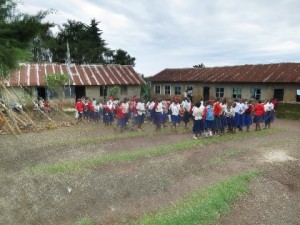

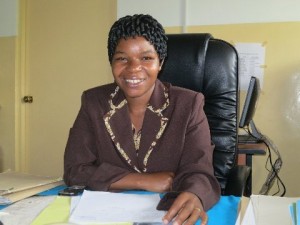
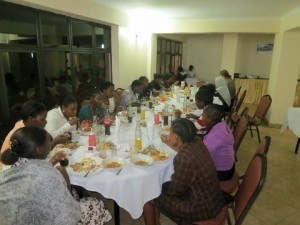
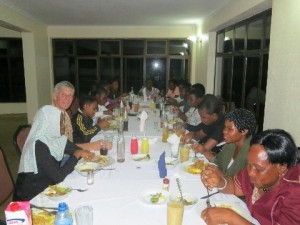
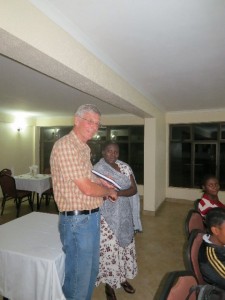
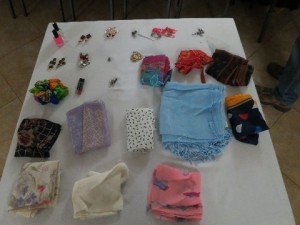
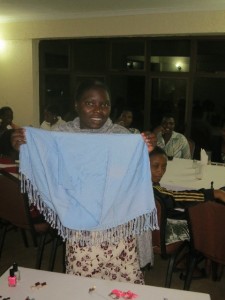
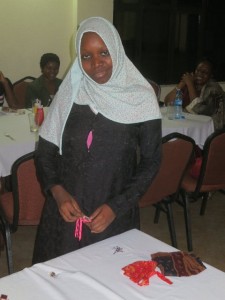
Which subjects are important in the Tanzanian school system?
Looking good! I love to see pictures of the students looking so happy. What amazing opportunity TNSP has helped to provide.